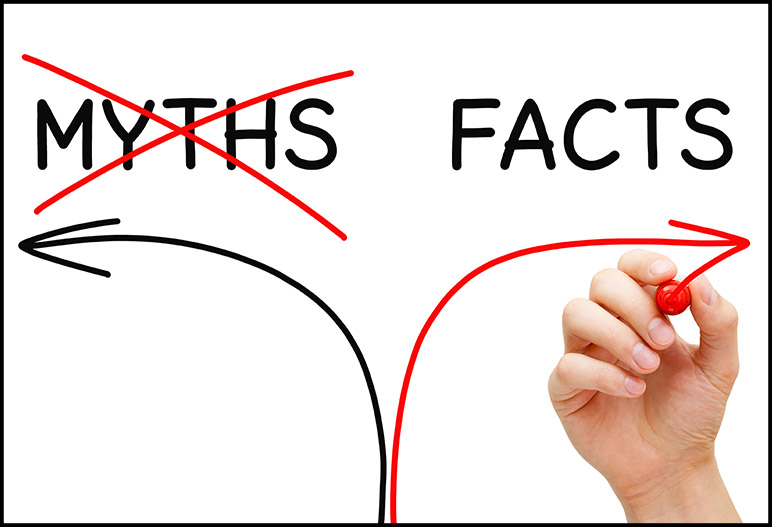
Why Truth vs. Myth Really Matters in Health Care
The misconceptions of health care affect our everyday lives. Dr. Aaron Carroll shed some light on a few misconceptions that impact employees or employers at The Alliance Annual Meeting.
Dr. Carroll is a Professor of Pediatrics, Associate Dean for Research Mentoring and the director of the Center of Health Policy and Professionalism Research at the Indiana University School of Medicine.
Carroll also hosts the YouTube channel, Healthcare Triage. This video series explains health care policy, medical research and answers many other questions you may have about medicine, health and health care. Healthcare Triage currently has over 250,000 subscribers.
The Tryptophan Illusion
 Each Thanksgiving, Americans often feel the need for a nap after eating their Thanksgiving dinner. Many blame the tryptophan in the turkey for making them sleepy.
Each Thanksgiving, Americans often feel the need for a nap after eating their Thanksgiving dinner. Many blame the tryptophan in the turkey for making them sleepy.
There is a large amount of tryptophan in turkey.
FALSE.
“Actually, there’s more tryptophan in ground beef or a ham and cheese sandwich,” said Carroll.
There are many other reasons why you could be sleepy on Thanksgiving. It’s not all about tryptophan. Eating a large meal, drinking alcohol, not wanting to do the dishes – Thanksgiving can be a fun, but stressful day.
“If I could break one misconception, it is that turkey alone doesn’t make you sleepy,” said Carroll.
Sugar + Hypersensitivity = ?
 Sugar make kids hyperactive.
Sugar make kids hyperactive.
FALSE.
Many parents will blame the consumption of sugar-filled treats when their kids exhibit hyperactive behavior.
“This myth is entirely in parents’ heads,” said Carroll.
Clinical studies have shown that there is no evidence that sugar consumption is linked to behavioral changes in children.
In fact, parents were more inclined to report their child’s behavior as “hyperactive,” if they were told their child had been given a sugary treat. Even if the child had not consumed a sugary treat – parents still thought their child was more hyperactive than normal.
Steerage Misunderstandings
 There are also misconceptions about employer-based health care benefits.
There are also misconceptions about employer-based health care benefits.
Steerage programs don’t work.
FALSE.
“For shoppable procedures, steerage works,” said Carroll.
Employees are often unaware that there are large price differences between medical providers.
In studies on reference pricing, consumers not only scheduled appointments with lower-cost providers, the higher-cost providers often lowered their prices. This has been found for a variety of shoppable, schedulable procedures including colonoscopies and arthroscopic surgery of the knee.
Wellness Daydreams
 Wellness programs are the best way for employers to bring down health care spending in our organizations and to improve the quality of employee health.
Wellness programs are the best way for employers to bring down health care spending in our organizations and to improve the quality of employee health.
FALSE.
Wellness programs encourage employees to live healthier lives. Often, “carrots” such as financial incentives for completing a health screening, or “sticks” such as penalties for lifestyle risk factors, are used. Employers believe the use of carrots and sticks will change employee behavior to become healthier.
The Kaiser Family Foundation has found that 36 percent of firms with over 200 employees use some sort of ‘carrot’ tied to their health objectives.
“Employers love wellness programs. That’s why employer-based wellness programs have grown into a $6 billion industry,” said Carroll.
Employees who don’t meet the demands of the wellness program, often have more of the cost of health care shifted onto them. As a result, wellness programs can achieve cost savings for employers.
If a wellness program includes penalties, employers need to be careful not to discriminate for risk factors that are out of the employee’s control.
One aspect of wellness programs that has shown significant cost-savings is disease management.
“That part isn’t much fun. But it works,” said Carroll.
By having an honest conversation about health care, employers can improve the health of their employees.
Telling What’s Real or What’s Not
By keeping conversations about health care “honest,” employers can improve the health of their employees.
Carroll said employers and consumers can figure out whether health information is truth or myth by considering the data behind it and the way it’s presented.
Many wellness studies are written by the wellness industry and only measure short-term effects.
Always look at the source of a study to identify any biases. Long-term, rigorous wellness studies are rare, but are less likely to show any improvement in long-term health.
“When a new idea or new information is presented, check to see whether drawbacks were examined alongside as well as benefits. There’s typically a tradeoff between them,” Carroll said.







